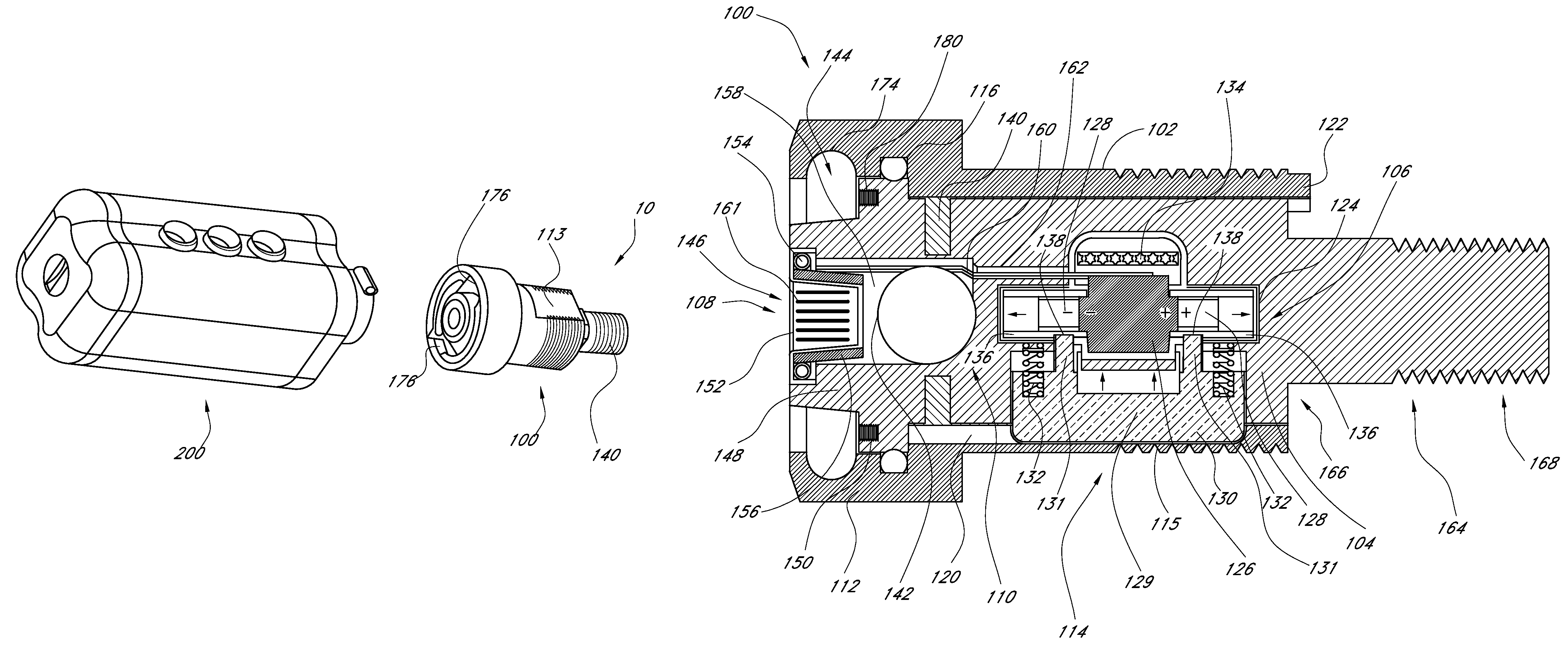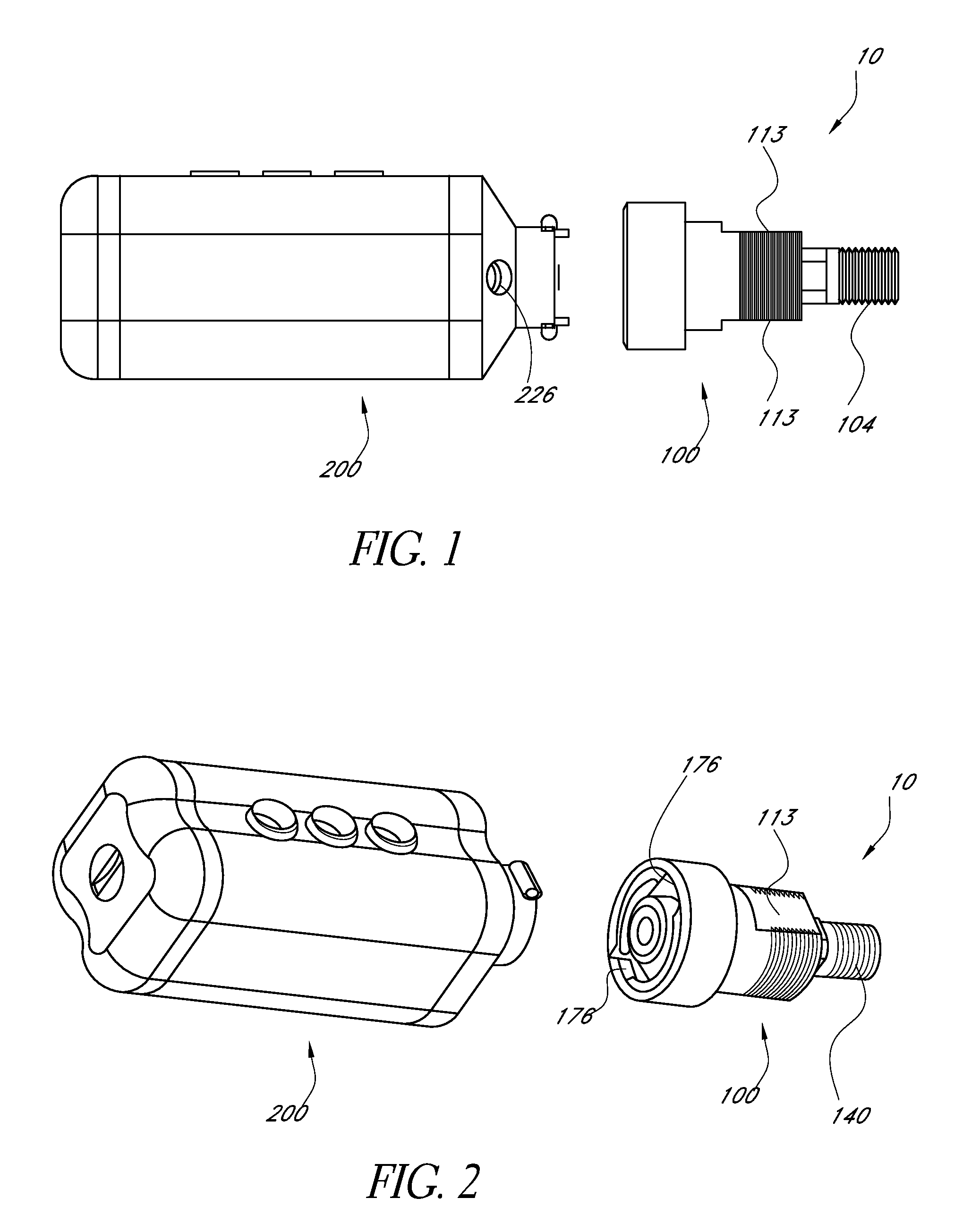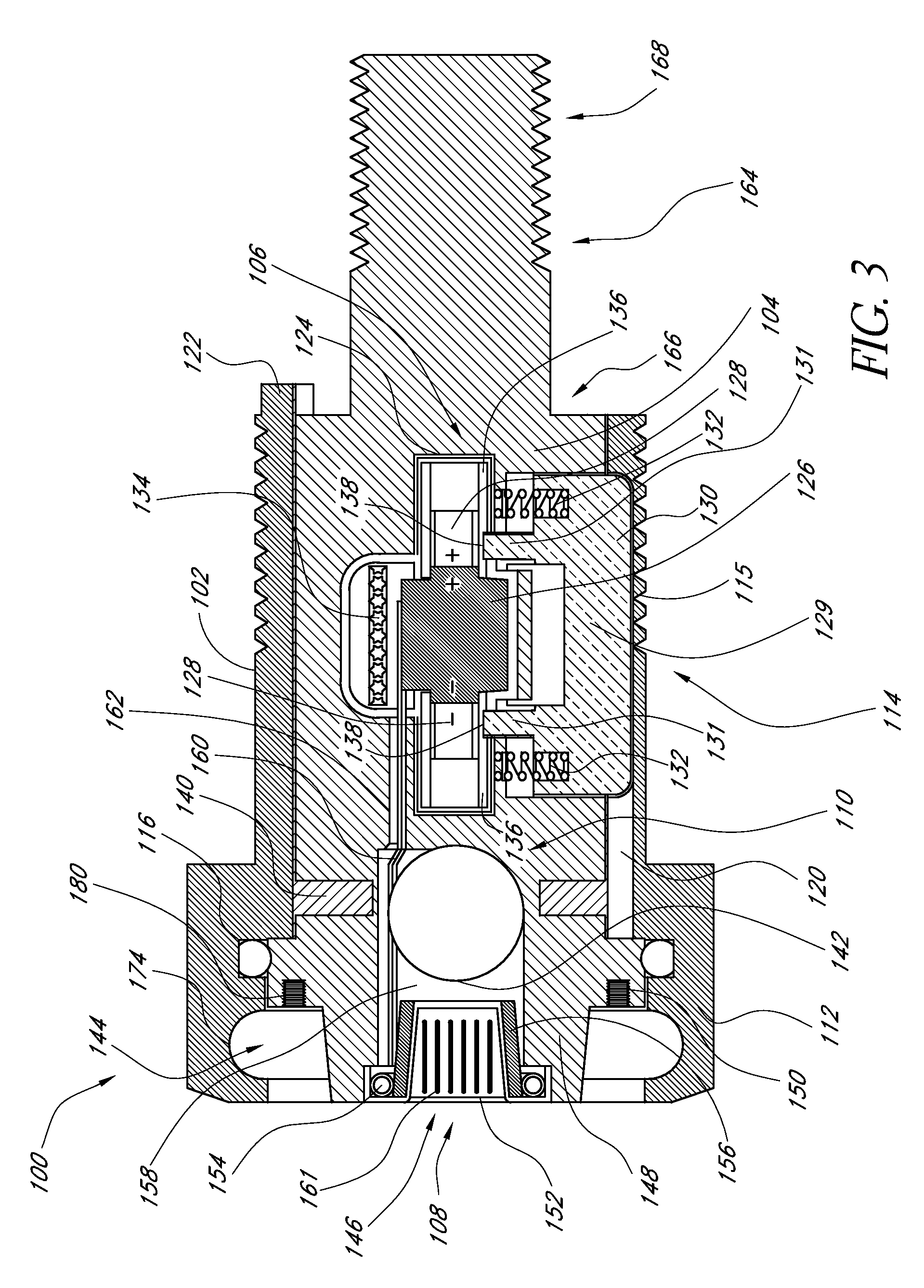Capacitive data transfer in an electronic lock and key assembly
a technology of electronic locks and key assemblies, applied in the field of electronic locks, can solve the problems of battery requiring constant replacement or recharging, the inability of locks of this type to use alternating current (ac) power supplies, and the inability to use power supplies to function properly
- Summary
- Abstract
- Description
- Claims
- Application Information
AI Technical Summary
Problems solved by technology
Method used
Image
Examples
Embodiment Construction
[0062]In the description below certain relative terms such as top, bottom, left, right, front and back are used to describe the relationship between certain components or features of the illustrated embodiments. Such relative terms are provided as a matter of convenience in describing the illustrated embodiments and are not intended to limit the scope of the technology discussed below.
[0063]Electronic key and lock assemblies can advantageously incorporate contactless power and / or data transfer as a technique of electrical communication between key and lock components. In addition to inductive power and / or data transfer using transmitters and receivers fitted with electrical coils, an alternative approach utilizes a capacitive, rather than inductive, interface as a mechanism of delivering an electrical signal. Use of a capacitive interface may provide certain advantages over an inductive interface. For example, with a capacitor, electromagnetic fields may be generally confined betwee...
PUM
 Login to View More
Login to View More Abstract
Description
Claims
Application Information
 Login to View More
Login to View More - R&D
- Intellectual Property
- Life Sciences
- Materials
- Tech Scout
- Unparalleled Data Quality
- Higher Quality Content
- 60% Fewer Hallucinations
Browse by: Latest US Patents, China's latest patents, Technical Efficacy Thesaurus, Application Domain, Technology Topic, Popular Technical Reports.
© 2025 PatSnap. All rights reserved.Legal|Privacy policy|Modern Slavery Act Transparency Statement|Sitemap|About US| Contact US: help@patsnap.com



